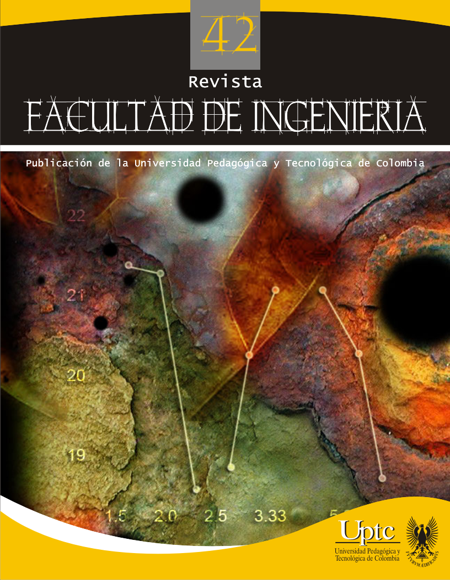Trajectory planning and execution in the workspace for a Delta robot

Abstract
This paper describes a technique for trajectory planning and execution in Cartesian Space to be applied in a delta robot. In order to configure and generate the desired path, is designed a software with Graphical User Interface (GUI), in which, the proposed algorithm is implemented to calculate and display the robot movement through midpoints in the workspace.
To validate the generated path is used a Delta robot designed and built in the Colombian Robotics Laboratory at Nueva Granada Military University. This robot is controlled by an electronic circuit that enables the proper implementation of the proposed technique. That makes it possible to validate the trajectories calculated by the algorithm and displayed in the simulation software, using a real robot.
Keywords
Delta robot, Jacobian, joint space, singularities
References
- A. Barrientos, L. F. Peñín, C. Balaguer and R. Aracil, Fundamentos de robótica, 2nd ed. Madrid, España: Mc Graw Hill, 2007.
- M. Mellado-Arteche. Robótica. Valencia. España: Universidad Politécnica de Valencia, 2011.
- J. P. Merlet, Parallel Robots, 2nd ed. Dordrecht, Netherlands: Springer, 2006.
- X-J. Liu and J. Wang, Parallel Kinematics: Type, Kinematics, and Optimal Design. Heidelberg, Germany: Springer Berlin Heidelberg, 2014. DOI: http://dx.doi.org/10.1007/978-3-642-36929-2. DOI: https://doi.org/10.1007/978-3-642-36929-2
- R. Clavel, “Device for the movement and positioning of an element in space,” U.S. Patent 4976582, Dec. 1990.
- L. Urrea and S. Medina, “Diseño e implementación de una plataforma robótica tipo Delta”. Trabajo de Grado, Ingeniería en Mecatrónica, Facultad de Ingeniería, Universidad Militar Nueva Granada, Bogotá D.C., Colombia, Sep. 2012.
- S. B. Niku, Introduction to Robotics: Analysis, Control, Applications, 2nd ed. Hoboken, USA: John Wiley & Sons Inc., 2010.
- M. W. Spong, S. Hutchinson and M. Vidyasagar, Robot Modeling and Control. USA: John Wiley & Sons, 2005.
- S. K. Saha, Introducción a la robótica. Noida, India: McGraw-Hill, 2010.
- J. J. Craig, Robótica, 3rd ed. Atlacomulco, México: Pearson Educación, 2006.
- S. Y. Nof, Handbook of Industrial Robotics, 2nd ed. USA: John Wiley & Sons, 1999. DOI: http://dx.doi.org/10.1002/9780470172506. DOI: https://doi.org/10.1002/9780470172506
- L. Biagiotti and C. Melchiorri, Trajectory Planning for Automatic Machines and Robots. Heidelberg, Germany: Springer, 2008.
- B. Siciliano, L. Sciavicco, L. Villani and G. Oriolo, Robotics: Modeling, Planning and Control. London, United Kingdom: Springer, 2009. DOI: http://dx.doi.org/10.1007/978-1-84628-642-1. DOI: https://doi.org/10.1007/978-1-84628-642-1
- R. N. Jazar, Theory of Applied Robotics: Kinematics, Dynamics and Control, 2nd ed. Boston, USA: Springer US, 2010. DOI: http://dx.doi.org/10.1007/978-1-4419-1750-8. DOI: https://doi.org/10.1007/978-1-4419-1750-8
- P. Corke, Robotics, Vision and Control: Fundamental algorithms in MATLAB®. Heidelberg, Germany: Springer, 2011. DOI: http://dx.doi.org/10.1007/978-3-642-20144-8. DOI: https://doi.org/10.1007/978-3-642-20144-8
- MathWorks SimMechanics™. [Online]. Available: http://www.mathworks.com/products/simmechanics/.
- ARDUINO® Leonardo. [Online] Available: https://www.arduino.cc/en/Main/arduinoBoardLeonardo.